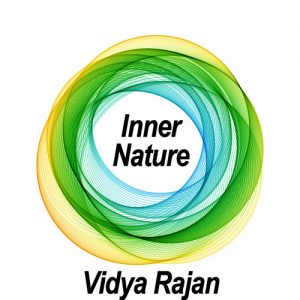By Vidya Rajan, Columnist, The Times
 I got some nice feedback from people who enjoyed my previous article on the similarities between eggs and seeds –two apparently disparate things which have the same function. This month, to celebrate the season of leaf color changes and the season of Halloween (or Hallowe’en), I am going to compare fall leaf colors and the colors of blood. Yes, colors of blood; the plural is advisedly used.
I got some nice feedback from people who enjoyed my previous article on the similarities between eggs and seeds –two apparently disparate things which have the same function. This month, to celebrate the season of leaf color changes and the season of Halloween (or Hallowe’en), I am going to compare fall leaf colors and the colors of blood. Yes, colors of blood; the plural is advisedly used.
Halloween harkens back to the ancient Celtic religion of Samhain, which commemorated the end of the harvest season, the time animals stockpiled food for the winter, and the apparent death of plants as the temperatures turned colder. The night of October 31 was thought to be the veil between this world and the next, with the dead penetrating through to walk among us. This linked the annual cycle of human behavior to the seasonal cycle; and why give up the chance to tell scary stories and dance a Celtic jig around the fire, I ask you.
This fun event spread through the pre-Christian world because the Romans knew a good thing when they saw one and they carried it around Europe. Later, as Christianity originated and spread, the Church also knew a good thing when they saw one, and subsumed Samhain into the calendar under the larger celebration of All Hallows with All Saints Day on November 1, and All Souls Day on November 2. Being too much of a mouthful for (presumably inebriated) folks, it got shortened to Halloween, the evening before the festival of All Hallows. Halloween sounds scarier too – spooky. The costumes came from the belief that ghostly beings from the other world walked among us and, unwilling to be singled out for their attention, living people began wearing masks so as to blend in with the undead. The practice of trick or treating evolved from the practice of leaving food on the doorstep to distract the spirits and stop them from coming into the house.
The Mexican El Dia de Muertos or Day of the Dead likewise sprung from a hybridization of the Aztec celebration of the harvest with the traditions brought by the Spanish and Christianity. Less ghoulishly, the celebration was for the dead to visit their loving living family. The tradition includes visiting the cemetery, making treats for the dear departed’s visit, and putting out their possessions and decorated skulls and skull-shaped candy to welcome them back.
By the time Halloween comes around, the seasonal colors of fall are everywhere. Trees and squashes glow red and yellow and green, decorating trees and doorsteps. Slasher movies with bloody scenes spray, drip, and sprinkle copious amounts blood. But there is a deeper connection between the reds and yellows of blood and trees that is not apparent until we look below the surface and delve into their inner nature.
As the days draw down in length and temperatures start to fall, a profound biological change occurs in deciduous plants. Their leaves turn from green to glorious shades of orange, yellow, and brown, and then float down, leaving the twigs bare and the branches naked. Of the cone-bearing plants, only the larch (tamarack) drops its needles which first turn a fiery yellow. The ginkgo’s leaves turn yellow too, but it is a gymnosperm like the larch, although not needle- or cone-bearing. Why do leaves change color? Would it surprise you to know they do not actually change color?
Leaf color does not change; rather, it is revealed. The onset of cold weather reveals colors that were previously hidden by the presence of a variety of green chlorophyll molecules that so efficiently overwhelms other pigments and reflects green color that our eyes do not pick up the hints of red, gold and copper below. All summer long, chlorophylls fool us into thinking that only green, green, green exists in leaves. Then the truth-telling of fall begins, and the green fades to expose what was there all along, especially in the Emerald Isles where Samhain brought the great reveal to an imaginative and story-telling folk. Plants are photosynthetic because, millions of years ago – about 440 million years ago, give or take a few – they had the foresight to kidnap a cyanobacterium to hold it hostage within their cells. This cyanobacterium had a superpower – it could absorb light to use to use the energy to make bonds between carbon dioxide and water to make glucose. The molecules that absorbed light were chlorophyll which confers a green color on algae and plants, but also orange carotenes present in the back of the animal eye – which is why carrots are good for night vision – and xanthophylls which glow yellow are abundant are revealed in banana skins, ginkgo, black maples, aspens, and larches. There are also anthocyanins which are sugar derivatives which stun with scarlet and maroon colors, and that are found in leaves, skins of fruit, and maple leaves.
And now for the bigger connection: The green chlorophyll of plants is first cousin to the red hemoglobin of blood. Both are descended from the pigment found in bacteria – bacteriochlorophyll, which comes in many varieties as befits its ancient origins: a, b, c, cs, d, e, f, and g, with different absorption peaks. The thing about bacteriochlorophylls is that they do photosynthesis without releasing oxygen. Chlorophyll too, comes in many flavors: a, b, c1, c2, d, e, and f. Evolution is like that – it creates variety. The longer the time it has to tinker, the greater the varieties it can produce.

Figure 1 : Comparison of the structures of hemoglobin, chlorophyll, and bacteriochlorophyll. Note that the pyrrole rings of chlorophyll and bacteriochlorophyll both have magnesium (Mg) as the coordinating metal ion, whereas hemoglobin has iron (Fe). All these molecules function in redox reactions: gaining and losing electrons to permit vision and photosynthesis. Compiled from Wikipedia sources (https://en.wikipedia.org/wiki/File:Hemoglobin-Chlorophyll.svg and https://commons.wikimedia.org/wiki/File:Bacteriochlorophyll_a.mol.svg
Red color has many origins. Red paint is a colored glue which sticks better to walls than to the brush or to other bits of paint, and the red tint variously comes from lead oxide, iron oxide (rust) and mercury sulfide. These are all inorganic molecules, and reflect the red wavelength, but have the additional benefit that they do not absorb light or oxygen and decompose. Lycopene, which confers red on tomatoes is a type of carotenoid which is resistant to oxidation and remains a bright shade of red even when used in Spaghetti Westerns to satisfyingly represent blood. Hitchcock used Bosco chocolate syrup in Psycho but, being a black-and-white movie, the color did not matter as much as the consistency.
Biological red pigments are either bioflavonoids or carotenes. Anthocyanin is a water-soluble bioflavonoid and is popular for its attractive shades of blue, black, purple, and red in flower petals and fruit based. The variation in color is related to concentration and pH. At low pH (acid) solutions, it is reduced and red, purple at neutral pH, and colorless in very high pH solutions. Nutraceutical antioxidants are either bioflavonoids or carotenes, since pH sensitivity also makes them good redox molecules. (Recall high school chemistry’s LEO says GER mnemonic: Losing electrons (or H or adding O) is reduction, and gaining electrons (or H or losing O) is reduction) This is also the reason wine varies in color between batches because fermentation produces varying amounts of acid.
Contrast this with hemoglobin, which oxidizes and decomposes when exposed to light becoming rusty in color, because the addition of oxygen to iron in hemoglobin does produce rust. Blood even tastes metallic because of the presence of iron. Hemoglobin, like chlorophyll, is a redox molecule. When oxidized it is bright red, and when reduced it is purple. The term “blue blood” comes from the appearance of blue veins under the translucent skin of aristocratic European ladies. Their use of lead powder as a face powder damaged their skin and allowed the capillaries to become more visible. To hide this unsightly webbing, they used more lead powder, and probably also developed lead poisoning. True blue bloods are the invertebrate mollusks and arthropods. Their blood contains hemocyanin, a copper-based pigment. The blood of the ancient horseshoe crab is not only blue, it is used in the pharmaceutical industry to monitor for contamination because even a small amount of bacterial endotoxin will cause it to clot. Millions of horseshoe crabs are exsanguinated for this purpose annually, although a new chemical called recombinant factor C (rFC) may has recently been approved by the FDA and the European Pharmacopeia. There are other colors too: green is due to chlorocruorin, and the hemerythrin of some marine animals contains iron in a different type of molecule. Melanin, the pigment found in the skin and hair of many animals has a red (phaeomelanin) or brown (eumelanin) tones, and their purpose is as a sunscreen, to protect from radiation damage. Figure 2 shows the formulas of some of the pigments of blood.

Figure 2: The many pigments in animal blood. Animal blood evolved as an antioxidant, and then was recruited to transport oxygen around the body. Credits: Reproduced under a Creative Commons Attribution License from https://www.compoundchem.com/2014/10/28/coloursofblood/
Back to Halloween! The recipe for fake “Spaghetti Western” blood is 4 parts tomato-paste to 1 part water. Come to think of it, spaghetti intestines in seasoned tomato-paste blood might make a quite satisfying Halloween-themed dinner.






